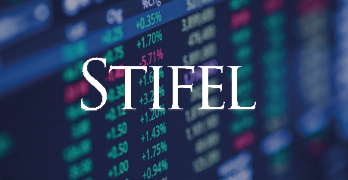BAI Index May 2023: Soft Demand and Continued Capacity Inflow Put Further Pressure on Rates

Moving through the traditional slack season for airfreight, global volumes continue to languish as economic activity and freight demand have been soft for most of the year. So far this earnings season, management teams have been pointing to a near trough in inventory-to-sales ratios and to the consumer recessionary cycle, into which we are two quarters of the way through a typical three quarter duration. And while we agree that it feels like we are near a trough, and inventory levels are nearing an inflection point relative to where they’ve been in history, most of the calls for an actual demand recovery seem speculative, and shipper forecasting for capacity needs has been getting less accurate, in our view. Our base case for 2023 and early 2024 is that any freight recovery is likely to be drawn out and muted, given continued goods-to-services rotation and pressure from inflation - especially food and energy - on consumer discretionary spend.
Regarding capacity, supply continues to come back into the system, especially on China-based lanes. China reopening has been driving increased passenger traffic, and thus, lower deck belly capacity. That dynamic is being exacerbated by continued service trade down, with many shippers now prioritising cost savings over expediency as supply chain congestion has subsided. This trend is moving express and main deck demand into deferred products, and in some cases, even into ocean freight as shippers look to trim freight spend and normalise budgets after years of supply chain dislocation.
Our base case for 2023 and early 2024 is that any freight recovery is likely to be drawn out and muted, given continued goods-to-services rotation and pressure from inflation - especially food and energy - on consumer discretionary spend
Considering those pieces together, overall rates have been remarkably stable through March and April. Declines have been relatively benign, falling 7.3% on Shanghai to North America (BAI 82), 5.2% on Hong Kong to North America (BAI 32), 11.7% on Shanghai to Europe (BAI 81), and 6.7% on Hong Kong to Europe (BAI 31). Those rates are approximately 4%, 5%, 10%, and 11% lower than the average year-to-date rate, respectively. While rates remain above pre-pandemic levels, elevated fuel prices constitute the bulk of that premium, in our view. If demand softness persists and belly capacity continues to recover, we would expect further rate declines as we move through the remainder of the year.
While rates remain above pre-pandemic levels, elevated fuel prices constitute the bulk of that premium, in our view. If demand softness persists and belly capacity continues to recover, we would expect further rate declines as we move through the remainder of the year
What does the future hold? From a capacity perspective, many carriers suggested that long term ecommerce trends and supply chain changes could justify longer term investment in main deck freighters. But normalising yields, the resurgence of belly capacity, and escalating discussion around nearshoring and reshoring - essentially deglobalization - are likely causing a rethink of some of those pandemic-era capacity forecasts. Carriers are likely to adopt a more measured approach to investment in expensive freighter assets. Global parcel giant FedEx, for example, has indicated that it will lean more heavily on third-party lift to supplement its owned “purple tails”. And if one overlays current demand uncertainty and the significant amount of economic tail risk that characterises the market - geopolitical turmoil, global inflationary pressure, rising debt and debt service costs, and instability in the banking system, to name a few - a measured approach could be wise indeed.
About Bruce Chan, Director and Senior Research Analyst covering Global Logistics and Future Mobility, Stifel
Bruce Chan joined Stifel in 2010. Based out of the Miami office, Mr. Chan is a Director and Senior Research Analyst covering Global Logistics and Future Mobility.
Bruce Chan can be reached at chanb@stifel.com. Opinions expressed are subject to change without notice and do not take into account the particular investment objectives, financial situation or needs of individual investors. For more information and current disclosures for the companies discussed herein, please go to the research page at www.stifel.com.
©2023 by J. Bruce Chan.